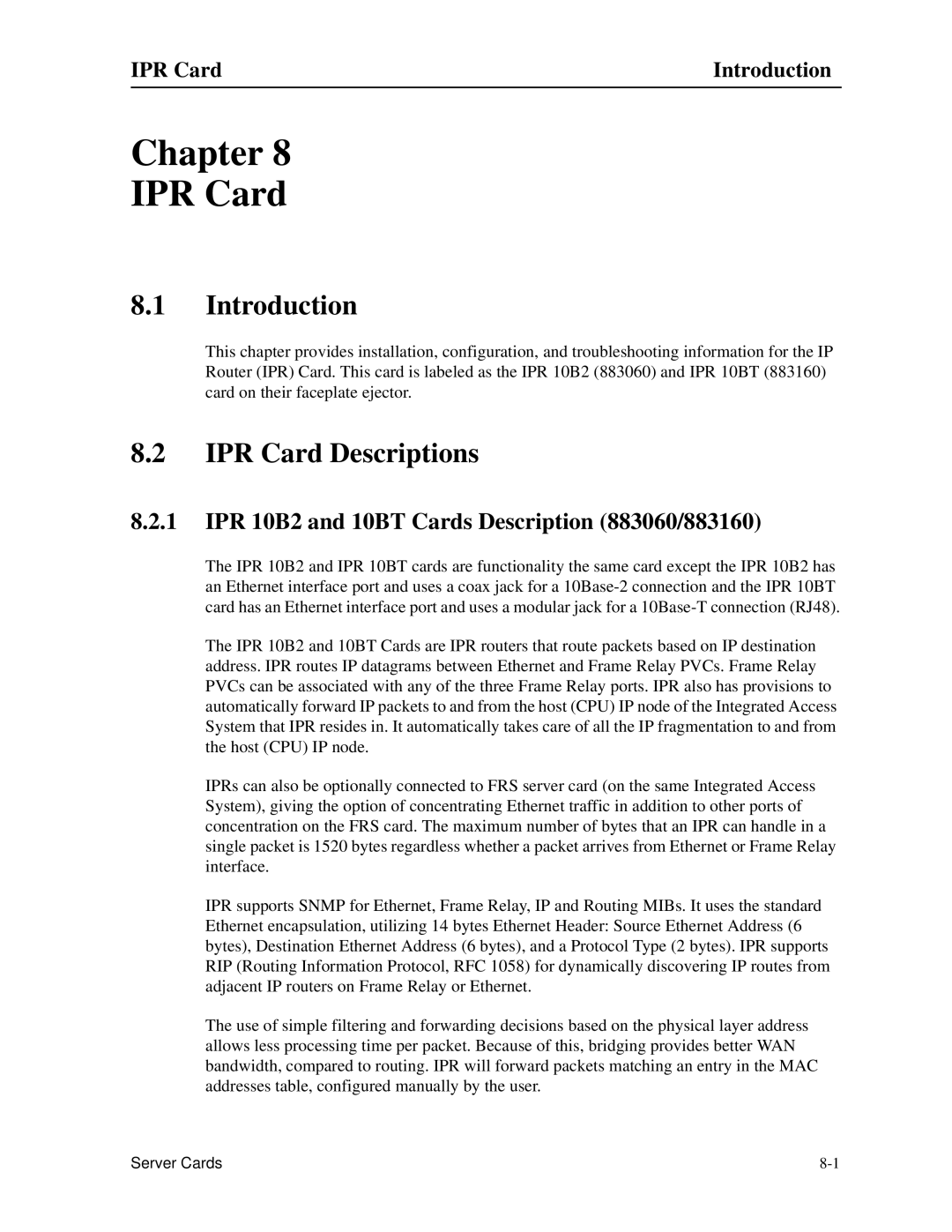IPR Card | Introduction |
Chapter 8
IPR Card
8.1Introduction
This chapter provides installation, configuration, and troubleshooting information for the IP Router (IPR) Card. This card is labeled as the IPR 10B2 (883060) and IPR 10BT (883160) card on their faceplate ejector.
8.2IPR Card Descriptions
8.2.1IPR 10B2 and 10BT Cards Description (883060/883160)
The IPR 10B2 and IPR 10BT cards are functionality the same card except the IPR 10B2 has an Ethernet interface port and uses a coax jack for a
The IPR 10B2 and 10BT Cards are IPR routers that route packets based on IP destination address. IPR routes IP datagrams between Ethernet and Frame Relay PVCs. Frame Relay PVCs can be associated with any of the three Frame Relay ports. IPR also has provisions to automatically forward IP packets to and from the host (CPU) IP node of the Integrated Access System that IPR resides in. It automatically takes care of all the IP fragmentation to and from the host (CPU) IP node.
IPRs can also be optionally connected to FRS server card (on the same Integrated Access System), giving the option of concentrating Ethernet traffic in addition to other ports of concentration on the FRS card. The maximum number of bytes that an IPR can handle in a single packet is 1520 bytes regardless whether a packet arrives from Ethernet or Frame Relay interface.
IPR supports SNMP for Ethernet, Frame Relay, IP and Routing MIBs. It uses the standard Ethernet encapsulation, utilizing 14 bytes Ethernet Header: Source Ethernet Address (6 bytes), Destination Ethernet Address (6 bytes), and a Protocol Type (2 bytes). IPR supports RIP (Routing Information Protocol, RFC 1058) for dynamically discovering IP routes from adjacent IP routers on Frame Relay or Ethernet.
The use of simple filtering and forwarding decisions based on the physical layer address allows less processing time per packet. Because of this, bridging provides better WAN bandwidth, compared to routing. IPR will forward packets matching an entry in the MAC addresses table, configured manually by the user.
Server Cards |
